Fairfax’s Matt Wade has asked the question:
Sydney has a bigger population than Melbourne, right? Well, maybe. A lot depends on where you draw Sydney’s northern boundary. At the moment the official definition of Greater Sydney stretches all the way to Lake Macquarie, about 120 kilometres north of the CBD. That means the city’s population is bolstered by the inclusion of the heavily populated NSW Central Coast. That region rates as Australia’s ninth largest “significant urban area” in its own right, according to the Bureau of Statistics. It comfortably ranks above Wollongong, Hobart, Townsville and Darwin.
So how would Australia’s two biggest cities compare if Sydney did not include the Central Coast? The bureau’s latest estimates put the population of Greater Sydney at just over 5 million in June 2016. Greater Melbourne’s head count stood at 4.73 million.
But if you remove the Central Coast’s 335,000 residents from Sydney’s tally it is a different story. That drags the harbour city’s population back to 4.7 million – about 25,000 fewer than Greater Melbourne.
On that definition, Melbourne became Australia’s biggest city in September 2015. And Greater Melbourne’s population could be even bigger if the boundaries were tweaked a little.
The adjacent Geelong region, for example, is not included in Melbourne’s population count. And yet Geelong is a little closer to Melbourne’s CBD than the central coast hub of Gosford is to downtown Sydney.
So if Greater Sydney did not include the Central Coast and Greater Melbourne did include Geelong, the Victorian capital would be Australia’s biggest city by a significant margin…
Melbourne is on track to become the nation’s biggest city, regardless of whether the Central Coast continues to bolster the numbers for Greater Sydney.
Wade makes a fair point.
Here’s the population charts as currently defined by the ABS:
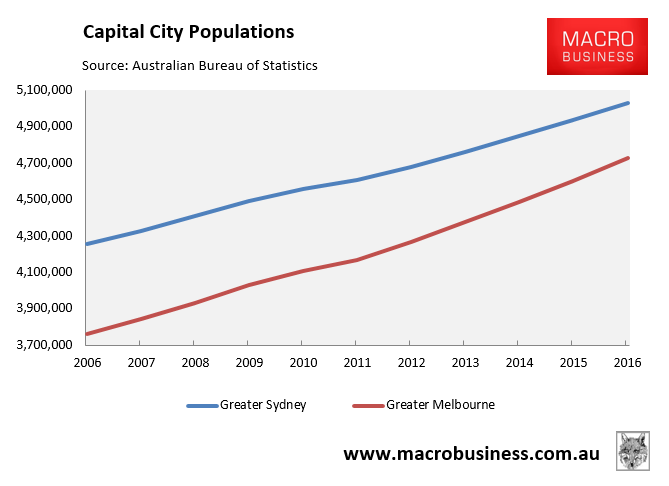
As at 2016, Greater Sydney’s population was 5,029,768 versus 4,725,316 for Melbourne.
If the Central Coast was excluded from Greater Sydney’s population, it falls below Melbourne’s to 4,694,459:
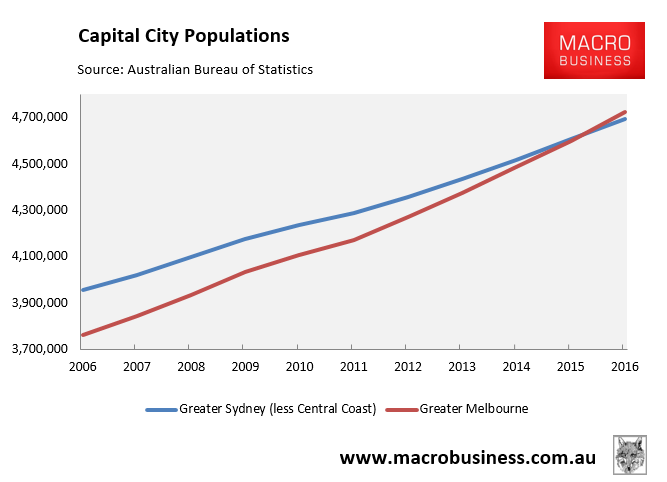
Whereas if Greater Melbourne’s population was to include Greater Geelong, its population would rise to 5,010,687, which is marginally below Greater Sydney’s:
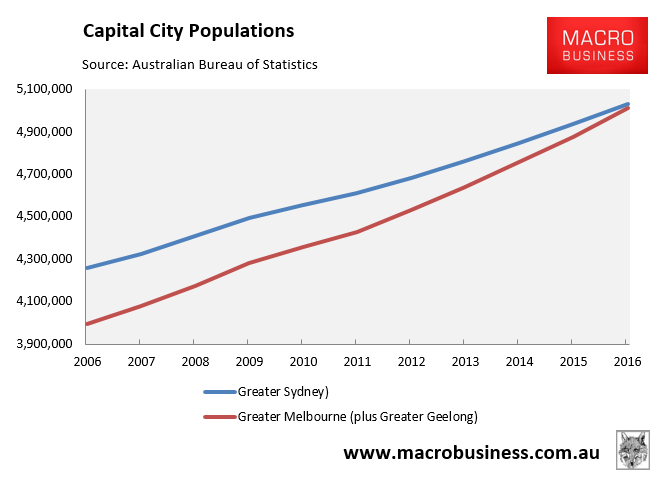
Not that any of this matters in the slightest. Both cities are experiencing excessive immigration-fueled population growth, which is choking infrastructure, housing and living standards:
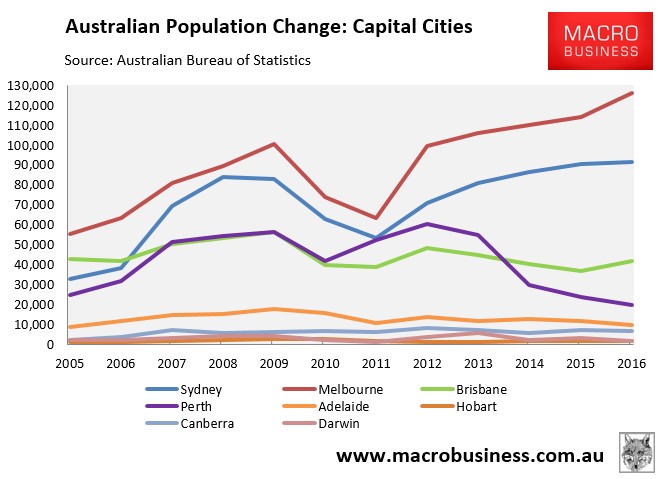
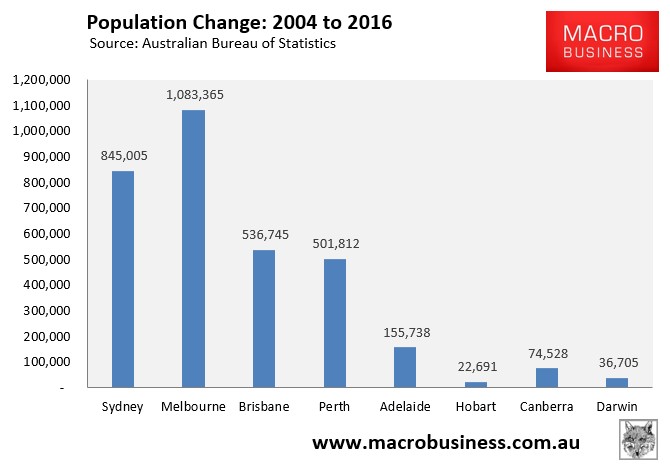
Both cities’ populations are projected to surge to around 8 million mid-century and by some 11 million by the end of the century:
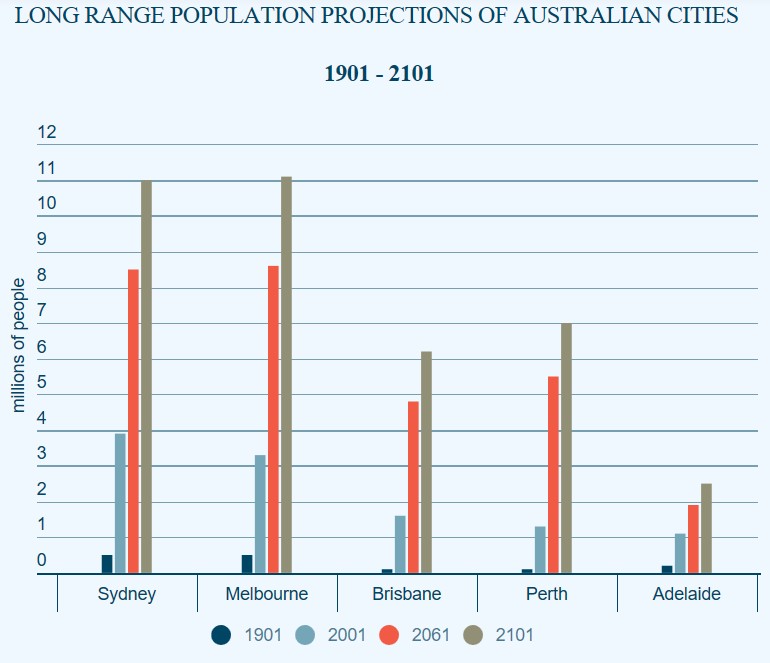
It’s a dystopian disaster in the making.

